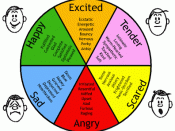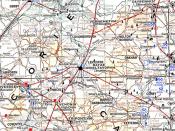The most dominant characteristics of Baroque is it's theatricality and contrasts - lights and dark, emotions (pleasure and pain), size, composition, and implication of mystery. It was created in Rome, roughly from 1620 to 1720, during the reign of greats. Such as Gregory the XV and Alexander VII. It grew during the dominance of the Roman church. Importantly, it retained its fundamental Roman characteristics, despite its far travels and changes. Baroque art grew and developed through a time of religion, administration and other hard, significant changes. The importance of vivid contrasts in Baroque art was to put more emphasis on the emerging spirit, feelings of the people, and act as a response to the changes of the times. For example, in a church's architecture, there would lie something simple and yet intriguing - the curved lines, unfinished ovals and strategic rays of light. The architecture was something like a painting and sculpture intertwined with the façade.
In the spirit of the Renaissance, the trio combination, with only one medium created an actual fusion of the arts. These spectacular architectural pieces were so impressive that at times individuals forgot that they were supporting structural pieces. Carefully controlled sources of light were also meant to further emphasize a certain piece. Symbolism, complicated and simple, was integrated in the sculptures/paintings/architecture. Baroque art was meant to put an emphasis on light and dark, turbulent compostions and exaggerated emotions.


